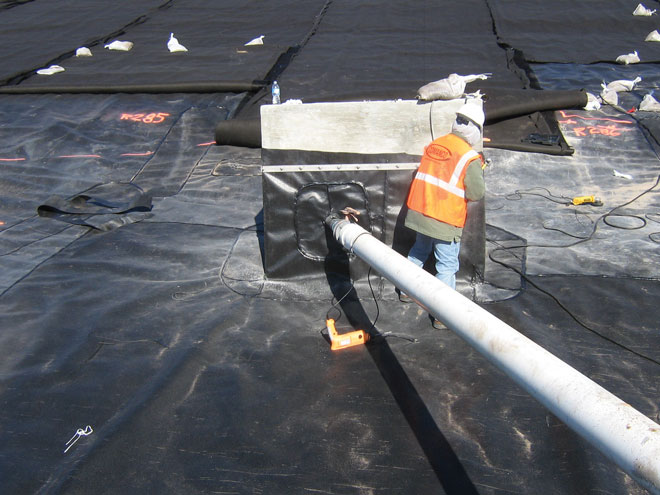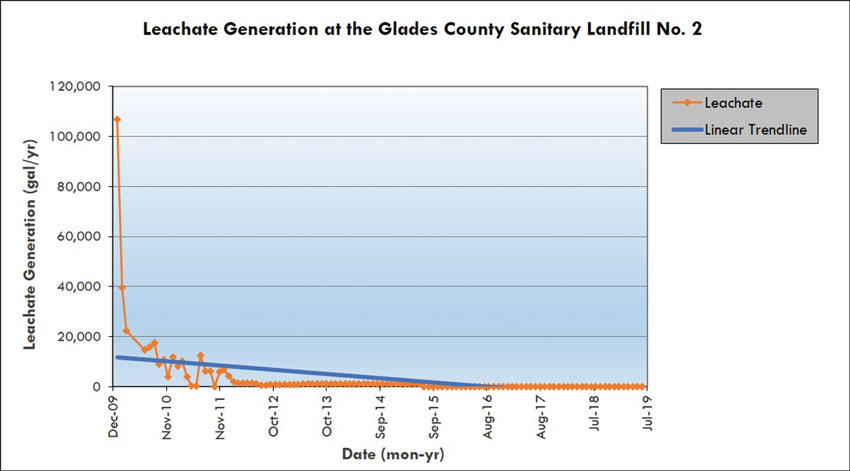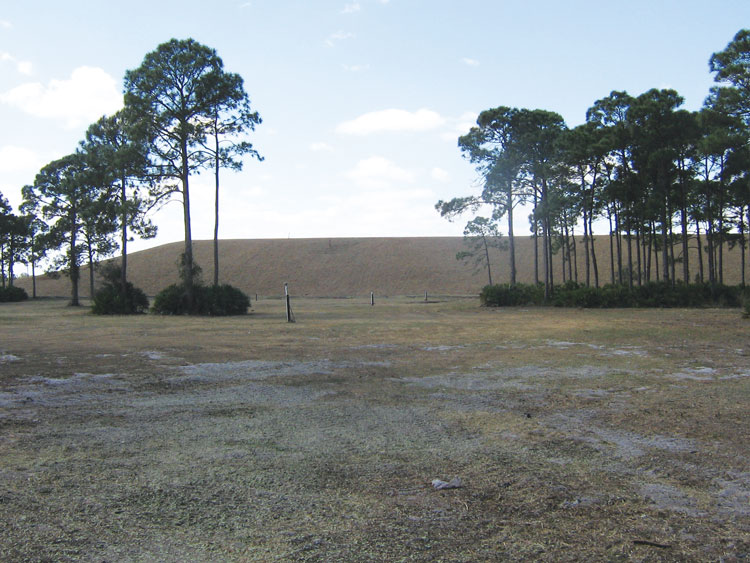The Glades County Landfill in Florida was a unique landfill since the entire surface area of the landfill was closed in a single construction event. This provided the opportunity to monitor leachate generation in a very controlled manner.
By Ali Khatami, Ph.D., P.E. and Myles Clewner, LEP
Glades County (County), FL, is the owner of the Glades County Sanitary Landfill No. 2 (Glades County Landfill), which is a closed 6.5-acre Subtitle D landfill with a double lining system meeting the Florida solid waste rules and a final cover including a 40-mil. geomembrane. The 6.5-acre cell served as the disposal facility for waste generated in the County for nearly 20 years. Typical waste deposited at the landfill was primarily municipal solid waste with a limited quantity of construction and demolition debris. Yard waste and vegetative waste was not placed in the landfill.
Due to the low volume of waste generated in the County and the high cost of developing a double lining system, in 2007, the County decided that it would no longer plan to expand the landfill footprint. Instead, it developed a transfer station in collaboration with the private sector entity on the landfill property. By mid-2008, the transfer station was constructed and placed in service. Waste delivered to the transfer station is now loaded and transported to a nearby regional landfill operated by the private sector entity.

Images courtesy of SCS Engineers.
Post-Closure Period
Since the landfill was not going to be expanded, the County decided to close the 6.5-acre landfill and enter the post-closure period. The entire landfill surface was closed in a single construction event, which stopped rainwater from entering the landfill following completion of the final cover construction in December 2008. The official date of the landfill closure was set by the Florida Department of Environmental Protection (FDEP) to be January 11, 2010. This official date of the closing was considered to be the start date of the 30-year post-closure period for the landfill, ending on January 10, 2040.
During the final cover construction, the geomembrane was welded to the bottom lining system, preventing water from entering the landfill due to outside sources such as storm water runoff from landfill slopes. Because of the small size of the landfill, construction of an active gas collection system was not required; only a few passive vents were installed over the top surface of the landfill venting excess gas generated inside the landfill to the outside environment. Therefore, landfill gas condensate that is normally generated in a landfill active gas collection and control system remained in the landfill.

Leachate Collection
During the active life of the landfill, leachate collected from the landfill was disposed of across an onsite irrigation field, which was monitored by a separate groundwater monitoring system than the landfill itself. The post-closure of the landfill was originally designed to involve leachate collection from the closed landfill, pumping leachate to the irrigation field, groundwater quality monitoring downgradient of the irrigation field, routine groundwater and surface water quality monitoring for the landfill system, and routine maintenance of the final cover and storm water system around the landfill. In accordance with the agreement between the County and the private sector entity, the leachate irrigation field was instead shut down upon closure of the landfill, and leachate was stored in an onsite storage tank for frequent removal to an offsite disposal facility.
The leachate collected in the leachate collection system manhole for the landfill disposal area was directly pumped to a storage tank during the early years after closure, when leachate generation was high. Following significant reduction in leachate quantities, the pumping system in the manhole was abandoned, and leachate was manually pumped out of the manhole and moved to the storage tank for transport to an offsite treatment system at a later date. The quantity of leachate transported to the leachate tank was recorded in the landfill operating logs each time a transport occurred. Data was also maintained in a spreadsheet format on a monthly basis.
Routine inspections of the final cover over the years have indicated no damage to the final cover that might have allowed storm water to enter into the landfill or leachate to be released from the landfill. Furthermore, there was no evidence that the gooseneck gas vents had become damaged to allow rainwater to enter the landfill.

Leachate Generation Data
Graph 1 shows the leachate generation decline from 2010 through June 2019 on a monthly basis. The leachate generation rate in 2010, shortly following closure of the landfill, was estimated to be approximately 137 gallons per acre per day (gpad), and the leachate generation reduced to minimal quantities by the end of 2015. The linear trendline of data is also shown in Graph 1. Due to the significant reduction rate of leachate generation during 2010, the linear trendline has mostly captured the data along the gradual reduction rate near the bottom of the graph. This is significant data supporting the notion that the leachate generation rate in closed landfills reduces to a stable point, where the landfill no longer poses a threat to the public health and safety. This also provides the opportunity to commence discussions with the regulatory agency officials for ending the post closure period of the landfill.
The data obtained from the Glades County Landfill indicates that leachate generation could possibly stabilize significantly prior to the 30-year post closure period. It should be noted that the County did not implement any special measures, such as temporary geomembrane caps, to reduce rainwater percolation into the landfill during the active life of the landfill, and the daily cover used for operations was sandy soil. Therefore, moisture content of waste prior to the final closure of the landfill was anticipated to be the normal range of waste moisture content placed in landfills located in south Florida. The authors caution solid waste professionals that the rapid declining trend presented in Graph 1 may not apply to every closed landfill, and specific data will be required to support the downward trend and stabilization point of other landfills.
Specific data collected from a closed landfill will also provide the opportunity to revise the leachate generation rate that is part of the post-closure financial assurance cost estimate that is updated on an annual basis. A significant component of the post-closure expenses is the disposal cost of leachate that is normally based on an assumed average number by the solid waste professional that prepares the estimate. Specific leachate generation data provides the opportunity to use a reliable leachate generation number for cost estimating and prevent over-estimating the leachate disposal cost for the entire 30-year post closure period. This is a significant point considering the increasing rate of disposal costs at wastewater treatment facilities, and further, the possibility of being prevented from disposing leachate at the wastewater treatment plant due to recent regulations coming into effect for wastewater disinfection requirements. This, when it happens, will steepen the increasing rate of leachate disposal costs even further.
Close Coordination
If the post-closure period of a landfill that has reached a stable leachate generation level cannot be terminated due to other reasons, the owner may revise its post closure maintenance and monitoring plan and abandon leachate collection and disposal procedures from the landfill routine operations. This will save expenses associated with such operations for the owner.
The Glades County Landfill was a unique landfill since the entire surface area of the landfill was closed in a single construction event. This provided the opportunity to monitor leachate generation in a very controlled manner. Larger landfills normally go through several partial closures over time before the entire landfill is closed. Leachate generation with partial closures has a tendency to skew leachate generation data, especially when the landfill is collecting condensate from the active gas collection system, removing liquids from watered-out gas wells, or recirculating leachate back into the landfill. A close coordination between the facility operator and the engineer is required to collect data from such a landfill to account for all liquid streams and quantities removed over time. | WA
Data Collection
The authors request solid waste professionals responsible for closed landfills to be diligent in collecting and publishing leachate generation data during the post closure period, as such data is of significant importance. Such data can also provide a baseline to regulatory agencies for determining environmental stability periods for various types of landfills based on actual data. Additionally, such data may be used for research by academia and organizations such as the Environmental Research & Education Foundation (EREF), which will be published and made available to the industry.
Ali Khatami, Ph.D., P.E. is Vice President of SCS Engineers (Long Beach, CA). He has more than 30 years of experience in design, permitting and construction of landfills. Dr. Khatami serves as the National Expert for Landfill Design, Construction Quality Assurance, and Elevated Temperature Landfills for SCS. He has extensive experience in various fields of engineering involved in design of landfills. Dr. Khatami has numerous technical publications and has been co-author on two books. He can be reached at [email protected] or visit www.scsengineers.com.
Myles Clewner, LEP is Vice President of SCS Engineers (Boca Raton, FL). He has practiced solid waste engineering since 2002 and environmental consulting since 1991. He has significant experience with the design, permitting, and compliance of numerous types of solid waste facilities, including municipal solid waste landfills, ash monofills, construction and demolition debris landfills, materials recovery facilities, municipal solid waste transfer stations, and composting facilities. He can be reached at [email protected] or visit www.scsengineers.com.
